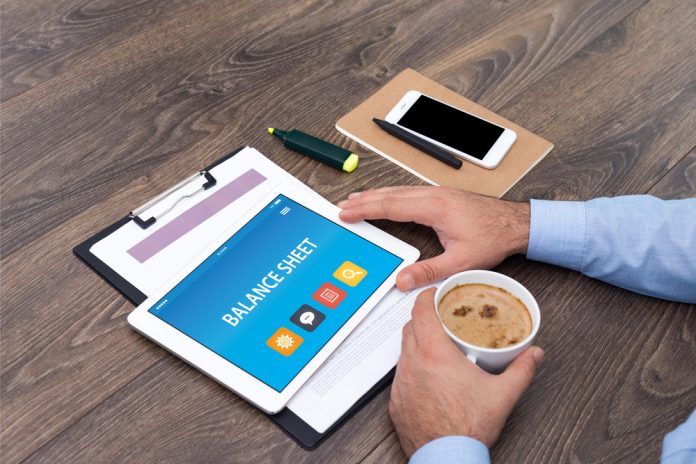There are different matters to consider when you open a startup business. One of the most important of them is the order of your finances. You would not want to lose your profits or run into problems with tax authorities because your money is not counted correctly. To get your finances in order, you need to know how to create a profit and loss statement and have an accurate balance sheet. Until you learn how to read your balance sheet well, you may want to hire an accountant, especially if you are a novice in business accounting. Your accountant will give you a helping hand with reading your balance sheet every time your business experiences changes. Or you can use accounting software to do your balance sheet, which will enable you to follow all your accounting information with ease and precision. In addition to generating your balance sheets, the software will automatically issue cash flow statements and other reports for you, whenever you need them. To help you decide whose services to prefer, of a human accountant or automated software, we are explaining in the paragraphs below what the balance sheet is and why exactly you need it.
As business owner, you will need to issue several financial statements every month. In addition to your profit and loss statement, you will also issue the income statement, statement of cash flows, statement of stockholders’ equity, and a statement of financial position. The last statement – the statement of financial position – is also referred to as the balance sheet. This financial statement is a summary of your company’s assets, liabilities, and equities. We will explain these concepts below, but for now you need to understand that unlike other statements, the balance sheet does not deal with trends; that is, it does not show an average or general tendency of your finances to move in a certain direction over time. The balance sheet focuses exclusively on the financial state of your company at a specific point in time, say, in May 2019. What is also crucial to remember is that the balance sheet always includes the summary of the three components and that the summary of your assets equals the summary of liabilities and equities. This is precisely why this financial statement is called a balance sheet. Its parts should be balanced: liabilities and assets should tally.
Calculated after every quarter, or six months, or one year, the balance sheet has two main parts: assets and liabilities. Simply put, assets are what your company owns. Assets can be current or noncurrent. Current assets are what you expect to convert into cash within one fiscal year. You use them to pay for your company’s current expenses and operations. Among current assets are cash, inventory, marketable securities, and prepaid expenses. Noncurrent assets are long-term assets. Your company expects to hold these assets over one fiscal year without converting them into cash. Noncurrent assets include land, properties, plants, equipment, trademarks, and long-term investments. Both types of assets are listed on your balance sheet.
Liabilities are your company’s financial responsibility. Like assets, liabilities can be current and long-term. As a rule, current liabilities are defined over a course of one fiscal year. But some companies may choose a different financial cycle. Current liabilities include notes payable, accounts payable, and accrued expenses, all of which are found on your balance sheet. What you need to keep in mind is that failure to pay your current liabilities will affect the financial situation of your company. Worse, if you do not pay them, the assets you need for your company’s operations may be foreclosed or even seized.
As their name indicates, long-term liabilities are any debts that should be paid in the future, at least in a year. Also reflected on your balance sheet, long-term liabilities do not immediately affect the financial stability of your company. Among long-term liabilities are mortgages, loans, debentures, long-term bonds, pension obligations, and deferred tax liabilities. Yet although the long-term liabilities pose no threat to your company’s finances, you need to remember that by the end of the fiscal year, some of them will convert into current liabilities which you will need to pay immediately.
Another important constituent listed on the balance sheet is your equity, if you own the company. Or it may be a shareholder’s equity. Assets are equal to the total liabilities or owner’s equity. If your company is a sole proprietorship, you will use your own equities. If your company is a corporation, you will use the shareholder’s equity. This is what is referred to as your company’s book value.
The balance sheet is extremely useful, since, containing a wealth of important information, it can help you improve your management of your company’s finances. There is a lot of data you can read from your balance sheet. When you subtract the liabilities listed on your balance sheet from your assets, for example, you will determine your company’s net worth. The balance sheet can also draw your attention to potential cash shortages. Check how much cash you have left in the bank and how much money you have in the table called “accounts payable.” If the number in this table is larger than the amount of cash you currently have, you will understand that you will either need to increase your cash amount or pay your bills slower. Without the balance sheet, you might miss such details and run into a financial trouble. Like other financial statements, the balance sheet, therefore, will help you make informative financial forecasts for your business and will enable you to forestall financial disasters on time.
Find a Home-Based Business to Start-Up >>> Hundreds of Business Listings.

















































